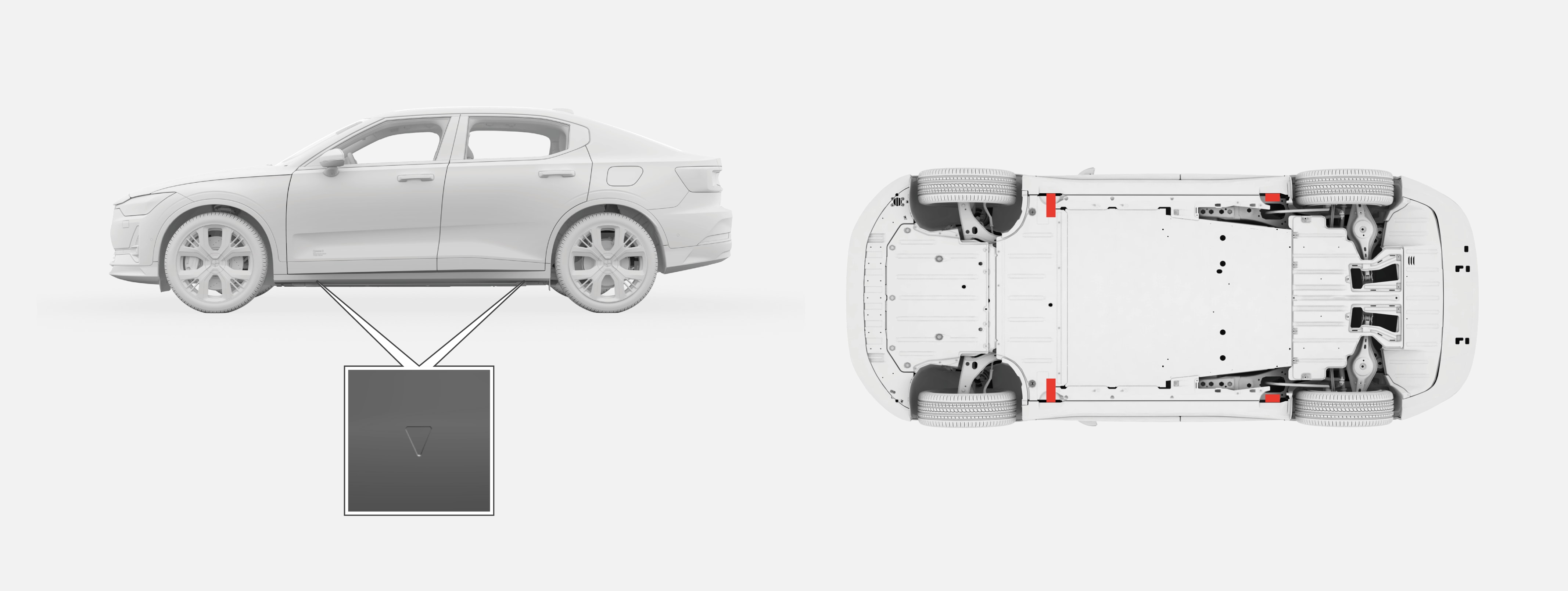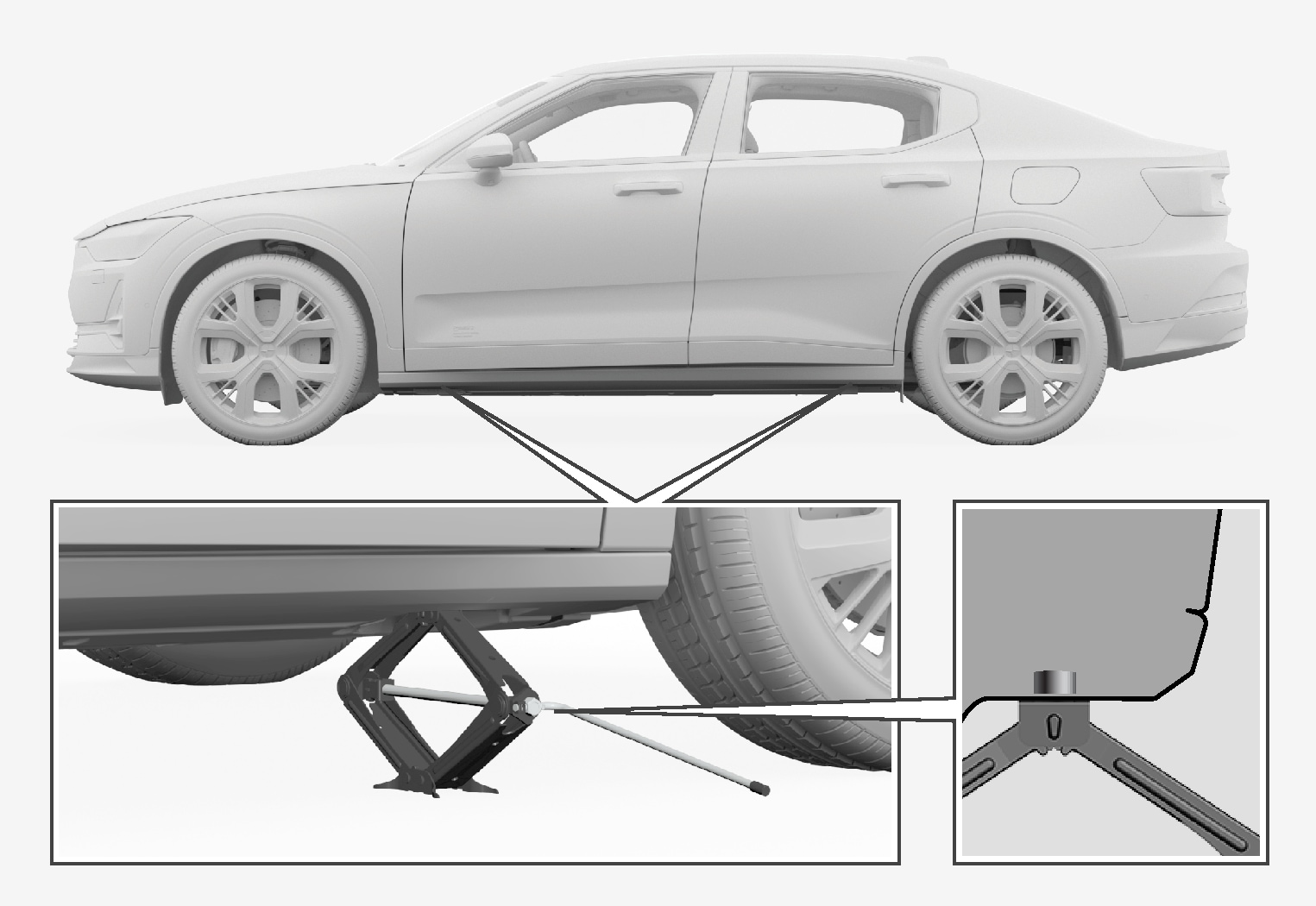Raising the car
When raising the car, it is important that the jack1 is fitted in the intended points on the car's underbody.

Note
Polestar recommends only using the jack that belongs to the car model in question. If a jack is selected other than the one recommended by Polestar, follow the instructions supplied with the equipment.
Important
- Use a jack2 designed for the car. If a jack is included with the car, or is purchased as a spare part, it is only designed for occasional, short-term use, such as when changing a wheel after a puncture. If the car is to be jacked up more often, or for a longer time than is required just to change a wheel, use of a garage jack is recommended. In this instance, follow the instructions for use that come with the equipment.
- When the jack is not in use, it must be stored in the foam block in the front cargo area. The jack needs to be cranked together to the correct position in order to have space.
Warning
- Check that the jack is not damaged, that the threads are thoroughly lubricated and that it is free from dirt.
- Check that the jack is resting on a firm, level surface that is not slippery and is not slanted.
- Never position anything between the ground and the jack, nor between the jack and the car's jacking point.
- Passengers must leave the car when it is raised on the jack.
- If a wheel has to be changed in an environment where there is lots of traffic, for example, passengers must remain in a safe place.
- Use a jack designed for the car when changing wheels. Use supports to secure the car for all other work.
- Never crawl under the car or reach under with a part of your body when it is raised on a jack.
Warning
If the car is raised using a workshop jack, this must be placed beneath one of the four jacking points. Take care to position the workshop jack so that the car cannot slip off. Make sure that the jack plate is fitted with a rubber guard so that the car remains stable and is not damaged. Always use axle stands or similar.
Read through the instructions below before you start. Take out the tools that you will be using before jacking up the car.
Set up the warning triangle and activate the hazard warning lights if a tyre is being changed in a location where there is lots of traffic, for example.
Ensure that the parking brake is activated.
Chock in front of and behind the wheels that remain on the ground. Use, for example, heavy wooden blocks or large stones.
Place the jack or the lifting arms in the designated locations on the car's chassis. The triangle markings in the plastic cover indicate the locations of the jacking/lifting points. There are two jacking points on each side of the car. There is a recess for the jack at each point.

Position the jack on level, firm and non-slippery ground under the jacking point that will be used.
Crank up until it is correctly aligned and so that it makes contact with the car's jacking point. Check that the head of the jack (or lifting arms at a workshop) is correctly positioned in the jacking point so that the bump in the centre of the head fits into the jacking point hole, and check that the base of the jack is positioned vertically below the jacking point.
Turn the jack so that the crank is as far away from the side of the car as possible, at which point the jack's arms are perpendicular to the direction of the car.
Raise the car to an appropriate height, depending on what is to be done.





